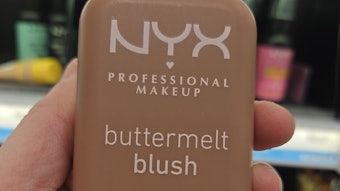Sucrose esters are well-known natural emulsifiers and while they are desired for their mildness and safety, they also are relatively expensive when compared with other emulsifiers. Accordingly, they have not been used as widely as they might at lower costs. In response, the authors have developed1 an emulsifier system comprising a mixture of ethylene oxide-free sucrose esters used at low levelsa to improve their cost-efficiency. This blend is shown to form multi-lamellar liquid crystalline networks that impart various benefits including skin moisturization, assessed here. Further, most cosmetic compositions prepared with the blend can be formulated with minimal regard to HLB due to the emulsion stabilization provided by multilamellar liquid crystals, which minimize emulsion coalescence.
Sucrose Ester Multilamellar Emulsifiers (SEMLEs)
Pioneering theoretical work on the formation of lamellar liquid crystalline networks was conducted by Friberg and Barry in the early 1970s. According to a summary of this work,2 lamellar liquid crystal networks can be formed in o/w emulsions by combining a high HLB primary emulsifier such as a hydrophilic swellant with a second, low-to-medium HLB co-emulsifier, i.e., a hydrophobic gellant. The high HLB primary emulsifier reduces interfacial tension and facilitates the formation of small oil droplets in the outer aqueous phase whereas the low HLB co-emulsifier forms a gel network.
This network structure stabilizes the emulsion by preventing creaming and coalescence of the oil droplets, as well as by building viscosity. More specifically, by heating the water phase to above the melting point of the low HLB co-emulsifier, the fatty chains of the co-emulsifier parallel each other, forming a bilayer structure—i.e., a lamellar phase. When this blend is subsequently cooled below that melting point, gel networks form around the co-emulsifier fatty chains.
The described topical composition1 includes: an emulsifier system comprising approximately 0.2% to 1.2% w/w of a mixture of a first sucrose ester, namely sucrose monostearate, with a second sucrose ester, sucrose distearate; in addition to at least one solid fatty alcohol having a melting point of at least 45°C, wherein the ratio of monostearate to distearate is ~1/1.3. This composition was shown by polarizing photomicroscope studies to form a multilamellar liquid crystalline network (see Figure 1).
While standard emulsifier systems can indirectly cause irritation by disrupting the skin’s outer lipid barrier, which allows irritants to penetrate the skin, since the two sucrose ester emulsifiers of the present invention are used at low levels and have excellent safety profiles, the described composition minimizes disruption of the stratum corneum (SC) as well as the penetration of irritants. Moreover, because the emulsifier blend forms a biomimetic multilamellar liquid crystal gel network, the emulsions produced protect and strengthen the SC barrier by keeping it pliant, elastic and moisturized, which will be shown.
An added benefit of the technology is that it allows for the use of preservative systems that are more skin compatible.3 For example, since the emulsion system is non-ethoxylated, preservatives that are milder and hydroxy-based, such as methylparaben and propylparaben, can be used. Additionally, the antimicrobial activity of sucrose esters can reduce the amount of overall preservative required, thereby further reducing the potential for skin irritation.2
Also, the multilamellar liquid crystal gel networks formed by SEMLEs have been found to be more stable than vesicular structures in cosmetic and pharmaceutical compositions, particularly liposomes, thus meeting the need for stable vehicles to carry and deliver cosmetic actives.4 Finally, SEMLEs have the capacity to form hydrates that, once formed, can produce emulsions using low energy, i.e. at room temperature (see Formula 1).
Efficacy Evaluation: Moisturization and Hydration
To test the effectiveness of SEMLEs to moisturize skin, a lotion was formulated (see Formula 2) and applied to the designated forearm of eight female panelists, between the ages of 23 and 57. Skin hydration was measured using a corneometerb at 1 hr, 2 hr, 4 hr, 6 hr and 8 hr after a single test application. These results were compared with untreated skin as the control.
Test procedure and conditions: Subjects were instructed to discontinue the use of soaps and cleansers on their arms other than a non-moisturizing soap provided during a seven-day conditioning phase and throughout the study period. Subjects were also instructed to refrain from excessive UV exposure and use of tanning salons during the study, and from taking any medications such as steroids, anti-inflammatory agents, anti-histamines, etc. After the conditioning period, subjects returned for product application and evaluation. Before measurements were taken, subjects were acclimated to an ambient temperature and relative humidity for 30 min.
One test site, measuring 2 in x 2 in, was identified by placing a transparent acetate template over the lateral surface of the forearm between the elbow and the wrist on either the right or left arm of each subject. The site was clearly outlined with a gentian violet marker, and control site in the corresponding location of the contra-lateral arm of each subject also was delineated.
Following the 30-min acclimation period, baseline corneometer measurements were taken and recorded. Using a 1-mL syringe, 0.2 mL of Formula 2 was applied to the designated forearm of each subject, in accordance with the specified randomization code, and rubbed in via a finger cot until completely absorbed. Triplicate corneometer readings were taken for the test and control sites at 1 hr and 2 hr after the initial application of the test material. Subjects were then permitted to leave and instructed to return 30 min prior to the 4 hr, 6 hr and 8 hr post-application corneometer measurements.5
Results: Under the conditions of this study, the sucrose ester multilamellar emulsifiers elicited hydration effects that lasted up to eight hours after a single application, relative to untreated skin. These increases were statistically significant, compared with the baseline and compared to changes in corneometer readings of untreated control sites (see Figure 2).5
Formulating with SEMLEs
Based on the protective lotion shown in Formula 3, a basic process to prepare emulsions based on SEMLEs can be described. This involves heating deionized water to 80–85°C and adding SEMLEs, holding the temperature for 30 min while mixing with a propeller blade. Suggested use levels range from 2–8%, depending upon the product type. Then a slurry is formed with the hydrocolloids, i.e. xanthan or scleroglucan, and polyglycerin-3 or glycerin. This is added to the main vessel with continued mixing, and preservatives and a chelating agent are added with continued mixing. Homogenization of this water phase should continue for 15 min while maintaining the temperature at 80–85°C.
For the oil phase, all ingredients should be combined and heated to 80–85°C, then added gradually to the water phase also at 80–85°C, continuing homogenization for 15 min. Finally, the batch should be cooled to 40–45°C and any fragrance or extracts added; homogenization should continue at 34°C until the batch cools to 30°C.
Summary
The described multilamellar liquid crystal technology provides a system to formulate skin care products that are ethylene-oxide free, are independent of HLB requirements, possess an excellent safety profile, and display a broad range of formulation applications. The formation of liquid crystals serves to enhance the long-term stability of formulations by minimizing emulsion coalescence. In addition, liquid crystals can extend the skin hydration properties of formulations, and provide good aesthetics and water resistance. Thus, by using sucrose esters at significantly lower levels, formulators are able to employ this technology to meet cost requirement challenges.
References
Send e-mail to [email protected].
- US Patent 7,754,775, Multi-lamellar liquid crystal emulsion system, MF Mercier, P Thau and J Chase, assigned to MMP, Inc. (Jul 13, 2010)
- Sisterna sucrose esters in oil-in-water emulsions, Sisterna technical note (March 1999)
- The route to mildness, Sisterna sucrose esters general information TDD 73001-6/17
- A Otto, JW Wiechers, CL Kelly, JC Dederen, J Hadgraft and J du Plessis, Effect of emulsifiers and their liquid crystalline structures in emulsions on dermal and transdermal delivery of hydroquinone, salicylic acid and octadecenedioic acid, Skin Pharmacology and Physiology 23 273-282 (2010)
- Internal report, Clinical Research Laboratories, Inc., report no. CRL28304










